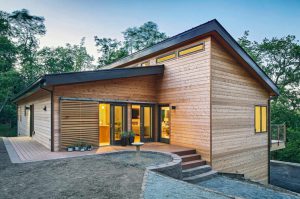Building and designing affordable zero energy homes
Zero energy homes are those that consume no energy, meaning the energy consumed is equal to the energy produced annually by renewable energy sources available. These homes are relatively low cost in that they utilize building materials and equipment available and also the building techniques are easy to learn. I’m going to give you some information on how to build and design affordable zero energy homes.
1. Design and orientation of the home
Choose the best design that you can afford. The designers, builders and architects must have a clear plan to implement in order for contractors and builders to avoid excessive costs. It’s important for the builder and designer to communicate in order to ensure all the information given is followed. The shape of the house, window size, roof overhangs; placement and all the other things that contribute to the design of the house have a major impact, and it is also important to consider how to manage solar gain and the direction of the prevailing winds. It is also important to be aware that the design is also affected by the surrounding.
2. Insulate and super seal the building envelope
Most of the energy is spent on heating and cooling of the home hence the best strategies should be used in order to cut costs. High R-value insulation is used whereby all the cavities and spaces are sealed to increase energy efficiency. Concrete thermal mass is also used to moderate the temperatures in the home by building concrete walls and floors. You should also ensure the house is airtight in that all the window and doors are well-fitting and that the ceiling, roof, bathrooms and kitchen should have enough ventilation while also maintaining energy efficiency. Finally, windows should be triple glazed while doors should be well insulated or even be double external doors to allow for heat gain that will compensate for heat lost.
3. Efficient heating and cooling should be increased
You should buy the best heating and cooling systems. Some of the systems include
geothermal pumps with a ground air heat exchanger installed in the ground, a quack deck, can be used for radiant floor heating because it generates heat uniformly, as well as ducting which is also good for energy saving. Cooling can be achieved by using evaporative coolers and by putting in place enough ventilation.
4. Other energy requirements should be decreased
This can be done by installing efficient energy lighting by using LED bulbs because they utilise less energy and also last longer. Efficient appliances should be installed by checking on the models that can save the maximum amount of energy in the home. In cases where computers, lights and other appliances are not used they should be turned off to avoid using a lot of energy.
5. Energy generation equipment should be installed
For efficient energy in the house you should have energy generation equipment such as solar panels that can help to supply more heat in order to compensate for the amount of heat lost. Solar energy is universal meaning it can be used for multiple purposes in the home for instance lighting, heating and cooling systems, hence saving on energy usage and cutting down on costs.
Energy saving homes are the best because they cut down costs especially daily bills.
Parting Shot
If you need a home go for energy saving homes, they seem promising.
I hope you got the information you needed here.
